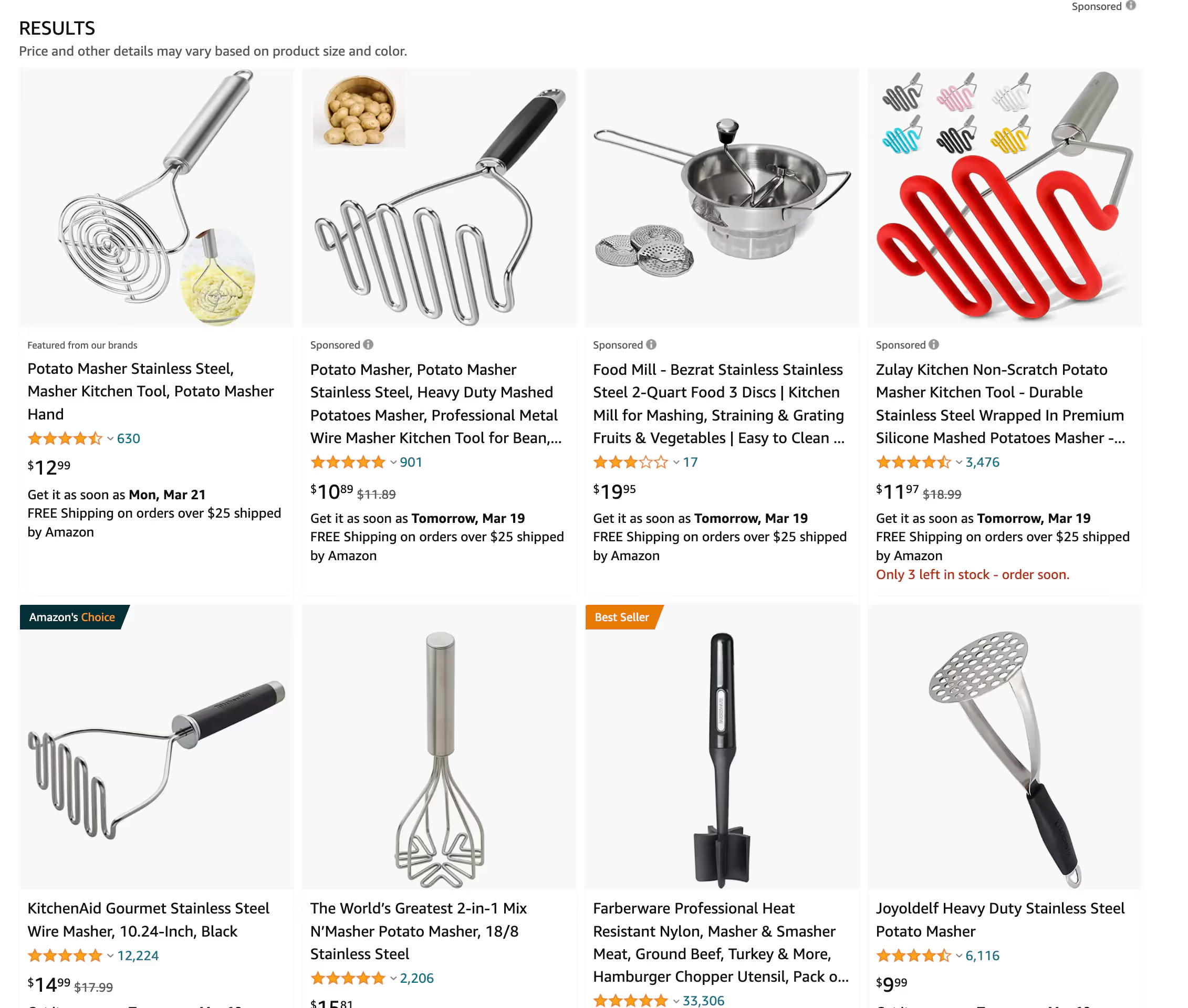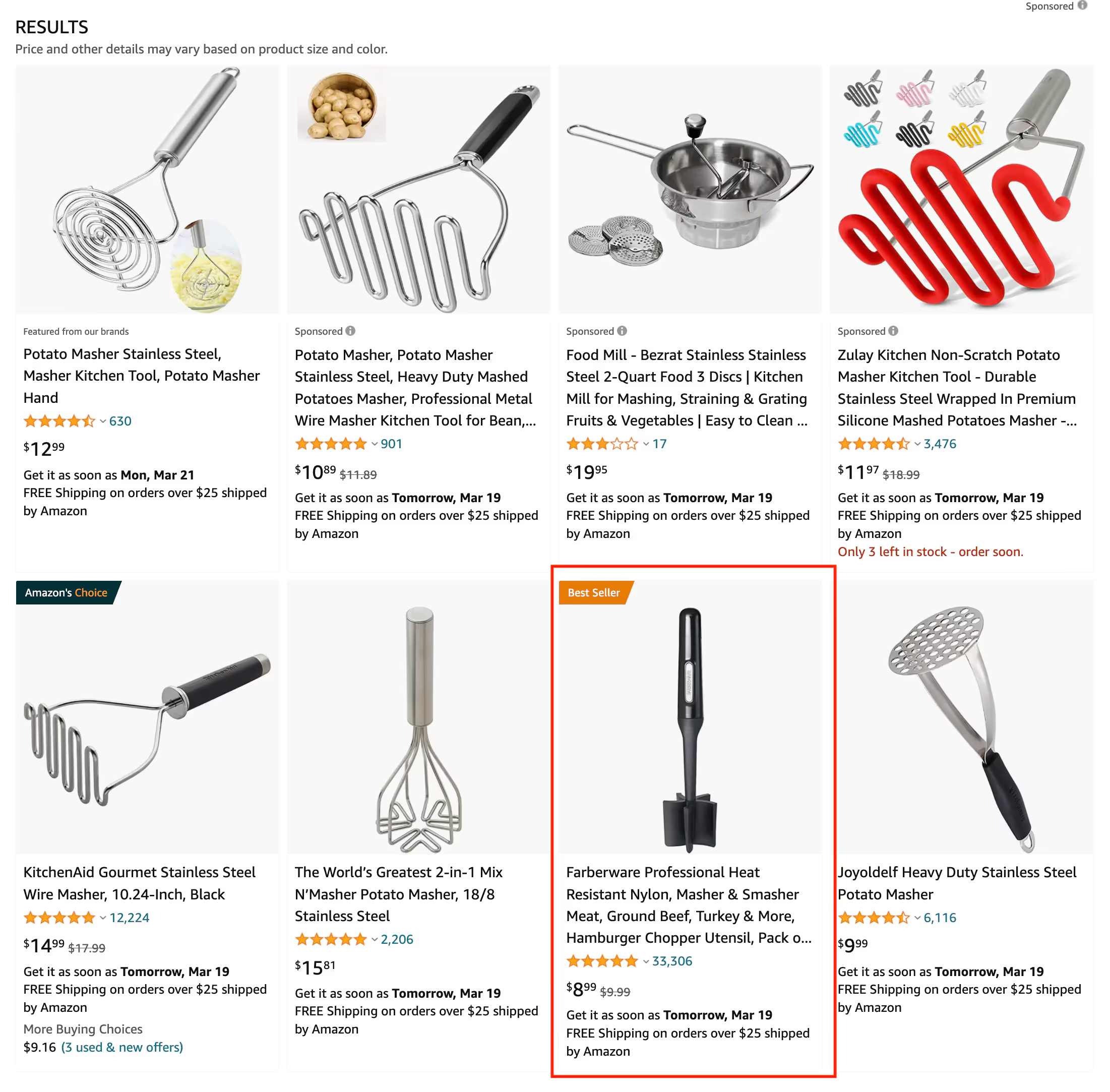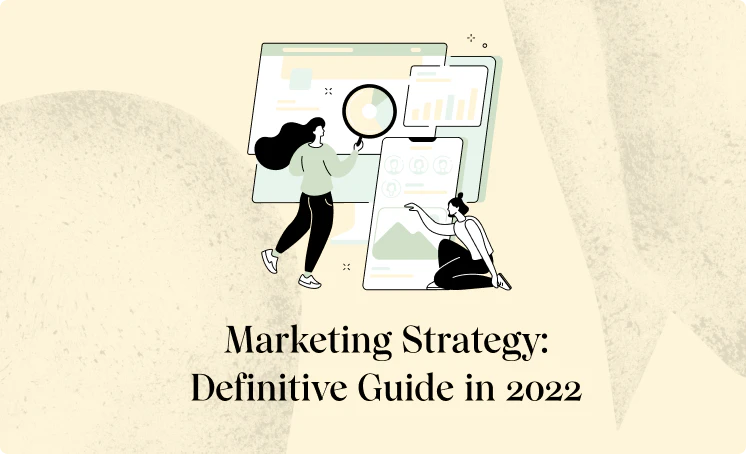Introduction
It’s no secret that with every passing year, the competition on Amazon is becoming more and more cutthroat.
Millions of customers use Amazon every day, but millions of brands are competing for these customers’ limited attention and budget.
As an Amazon seller, your goal is clear – surpass your competition. But to do this effectively, you need to know why your competitors are succeeding – or failing – in the first place.
An Amazon seller competitors analysis can help you gather the in-depth data you need to understand how your competitors are doing, how they are doing so, and what you can do to improve so that you can eventually surpass them.
Is an Amazon Competitors Analysis important for you?
The short answer is – yes!
No matter what type of business you are running, performing a competitors analysis is important to help you understand your market to see where you fit in.
This is especially important on Amazon, where you will be competing with thousands – if not hundreds of thousands – of similar products, depending on which niche you’re in.
Even if you believe you have something unique with no potential competitors, think again. Even the most unique, innovative businesses can learn from the competition, even if it’s not direct competitors.
If you want to stand a chance at succeeding on your Amazon journey, don’t discount the importance of your competitors analysis.
What Can You Gain From Tracking Your Amazon Competitors?
When you gain a solid understanding of what your competitors are doing as well as what their biggest strengths and weaknesses are, you have a lot to gain!
First and foremost, you can learn what works in your industry to inspire yourself to do the same. This gives you a competitive edge that can allow you to always remain one step ahead of your competitors on Amazon.
However, a deep competitors analysis goes way beyond that. It allows you to spot gaps in the market.
As a result, you can strategize your business in a way that fills those gaps. If you know your competitors’ weaknesses, you have a fast-track ticket to beating them because you know what they lack and what their customers would want.
In addition, a competitors analysis can help you source the right products, establish efficient advertising campaigns, and hopefully improve your sales performance so that you can climb in the Amazon sales rankings.
Amazon Competitors Analysis – Done Right!
It’s easy to gather surface-level information about your competitors. But if you want to do it right and improve your chances of outperforming them, follow the steps below!
LIST THE KEYWORDS YOU WANT TO RANK FOR
A lot of what you do to outperform your competitors will be related to which keywords you are competing for in the first place.
Whether you’re sticking to organic marketing only or are implementing paid ads on Amazon, keywords are at the heart of everything!
This means you first need to identify the keywords that you actually want to rank for before you make a list of your competitors. These are the words that people who want products like yours will most likely be using to search on Amazon.
Avoid the temptation to simply guess which keywords you should be using. Instead, consider using a keyword research tool such as SellerApp to create an exhaustive list of appropriate keywords.
IDENTIFY YOUR COMPETITION
Now that you know which keywords you want to rank for, you’ll need to identify who else is ranking for the same keywords.
Those products will be direct competitors with you!
For every keyword you want to rank for, perform an Amazon search. You don’t have to look at the thousands of search results, but make sure to at least analyse the first few pages.
Let’s say you’re trying to rank for ‘potato masher’. From looking at the first few results on Amazon, we can learn a lot about who your competitors are and what they’re doing.

• Prices range from $13 to $36, but most commonly fall in the $13 to $18 range
• Most of the available potato mashers are made from stainless steel and as such, use ‘stainless steel’ in their product titles
• Many of these products are multi-use
From this initial search, you can start compiling a list of your competitors.
FIND YOUR COMPETITORS
If we take a look at the previous example, your competitors if you’re trying to rank for ‘potato’ masher would be, amongst others:
- Zulay
- Kitchen
- Aid
- Ladizio
- Oxo
- Berglander
- Speensun
- Fox Run
- Nobranded
You can look even deeper down the search results, but keep in mind that the further down the search results you look, the less likely you are to find competitors worth analyzing.
It’s a good idea to find your competitors on Google as well. Even if you find results that don’t show up on Amazon, you can learn a lot from these businesses.
Remember to do this step for every important keyword you want to rank for!
NARROW DOWN THE BIG PLAYERS IN YOUR NICHE
At this point, you’ll have a long list of potential competitors.
If you were to perform a thorough competitor analysis for each business on your list, it would take forever! Instead, you should narrow down the big players for your niche.
First off, are the businesses on your list actually performing well? If they are showing up on the front page for search results as sponsored products, this doesn’t mean they’re performing well – it simply means they are paying for ads.
So if you notice these sponsored products don’t show up at all in the first or second page, remove them from your list.
Make sure to keep the Amazon Bestsellers and Amazon’s Choice products, since they are the ones you’ll be competing against for top spot in your niche.

In addition, keep track of competitors who have more than one product show up on the front page. For example, both the Oxo and KitchenAid brands have two or more potato mashers ranking on the first page, so we know they are doing something right.
With your list of big players, you’re now ready to categorize them based on the following:
- Primary competition: Brands who either sell products similar to yours, or are competing for the same audience.
- Secondary competition: Either offer a low-end version of your higher-end product, a high-end version of your lower-end product, or sell similar products but target a different audience.
- Tertiary competition: Only sell products that are tangentially related to yours (a potato peeler would be tangentially related to your potato masher, for instance).
For every competitor, whether they are primary, secondary, or tertiary, make sure you gather their basic information before diving deeper. This should include their brand name, what types of products they have available, which category of competition they fall into, some basic strengths and weaknesses, and their mission statement and values if this information is available.
ANALYZE EVERYTHING YOUR COMPETITOR HAS
Competitors’ targeted keywords
What are your competitors doing to make sure they show up for the keywords you both want to rank for?
Analyzing their targeted keywords – and what they’re doing to rank for them – can help you do the same and possibly outrank them.
First, you should find out what keywords they’re potentially interested in. With a tool like JungleScout, you can easily find that out, then compare with what your competitors’ strategy looks like.
What do we mean by this? Let’s say you’ve discovered your potato masher competitors are also targeting the keyword ‘stainless steel’’. Analyse their listings to find out what they’re doing.
Backlinks
While backlinks won’t necessarily help you show up on the Amazon search results first page, they can be helpful in other ways.
Generating backlinks to your product page on Amazon can make it easier to show up first on Google, but you should also consider building backlinks to your own website if you have one.
In fact, your high-ranking competitors are probably doing so already!
Using the same list of keywords you already know your competitors are using, type in your competitors’ domain in SpyFu to find out which websites are linking back to that domain using the specified keyword as an anchor text.
This type of research will tell you a few things:
- The volume of backlinks your competitors have (which indicates how many you should try to build)
- Which domains your competitors are working with to build backlinks
- Which keywords they’re prioritizing for backlink building
Building backlinks is a long-term strategy, but having this information on hand can help you establish your own strategy to eventually step ahead of your competitors!
Competitors’ ad campaigns
Do you know what the average cost per click in your niche should be?
In order to stay competitive, your ads need to generate a similar or lower cost per click compared to your competitors.
You can use a tool like Cerebro to dive deep into your competitors’ paid ad strategies on Amazon and find out info like:
- Which keywords your competitors are paying for
- Search volume for these keywords
- Exact or broad phrase keywords
Additionally, you can manually verify ad campaigns by searching the keywords on Amazon. As a result, you’ll see which brands are running ad campaigns for the keywords you want.

Consider checking Google Shopping ads too and not just Amazon ads! If you search for your keyword on Google and you see Amazon products show up in the results, you’ll know your competitors are doing this, which could indicate you should do the same.
On the other hand, if you find no Amazon products in Google Shopping ads, you have two options:
1. Do what your competition is doing and avoid Google Shopping ads
2. Take advantage of the fact that no other Amazon sellers are using Google Shopping ads and jump on the opportunity
Either way, you’ll have to test and measure the outcome for your brand.
Listing quality
Your listing is the first thing that any customer will see before they purchase your product. This means the quality of that listing can make or break your success.
The same goes for your competitors.
The more details you include in your listing, the more chances you’ll convert Amazon users into customers.
Look through your competitors’ listings to see what they’re doing right, and what they’re doing wrong.
Any good listing should contain:
- Product title
- Product features, broken down into compelling bullet points
- Detailed product description
- Questions and answers
- Professional product images
For example, if you notice your competitors have weak product images, consider investing in high-quality images to make your listings more attractive compared to other products on the market!
Pricing
Apart from listing quality, your customers will also heavily weigh their decision on the pricing of items on Amazon – or anywhere, for that matter!
You can’t reasonably price an item in the $50 dollar range if your competitors offer the same type and quality for $20.
For example, when looking at wedge pillows, the listing on the right is much more expensive, so the only reason we would pick this one is if they can offer features that the others can’t.

Analyze how your competitors are pricing their own items, and decide whether you want to offer a higher quality product for the same price (or slightly higher), or offer a lower-priced item of similar quality.
Of course, you need to ensure your price is high enough so that your margins are still profitable.
However, products get repriced all the time! You can use repricing software to automate your pricing strategy so that your listing stays competitive without you having to constantly watch over every competitor, every day.
Just make sure you set up automation rules that don’t kill your margins.
Reviews
Reviews are typically the true reflection of a product’s quality. Don’t just base yourself on the listing and copywriting your competitors use – make sure you analyze what their customers believe, too!
You can find out specific details about what your competitors are doing right according to their customers, but most importantly, you can dig out their biggest weaknesses. Even the most high-rated, bestselling products on Amazon have some negative reviews that you can learn from.
Based on this, you know what you can improve in your own products to get an edge on those competitors.
For instance, this potato masher has a 4.8 star rating with a total of 12,224 reviews.

Competitors’ websites and customer experience
Many Amazon businesses also have their own website. This allows them to customize the customer experience and establish a strong brand presence, amongst other things.
When visiting your competitors’ websites, check the following:
- What is the ease of use of their website and user interface?
- Is their mobile website optimized?What types of pop ups and other opt-in forms do they use?
- Do they have a welcome email sequence when you sign up to their email list?
- Is information easy to find on their website?
If you find that certain elements of your competitors’ websites are clunky or far from user-friendly, this is something you can improve on. Unpleasant websites have higher bounce rates, so those customers are likely to find you instead and stay on your site if you work on this!
Social media
Amazon is many things, but it doesn’t provide much in terms of interaction with your customers. As a result, many Amazon sellers use social media to grow their relationships with potential and existing customers.

Using social media to promote your Amazon products can help you drive organic traffic to your listings. If your competitors are doing this, it’s important that you do the same, especially if your target audience hangs out on social media!
Take a look at:
- Which platforms they are using
- What type of content they’re posting
- How often they publish posts
- What engagement looks like on an average post
This will help inspire you to create your own social media strategy.
What Should You Do With The Gathered Competitor Information?
Once you’ve gathered all the information about the top players in your niche, you now have a complete Amazon competitive advantage analysis – but your job isn’t done yet!
You can now take this information in various directions, but here are some starting points to dip your toes into.
DEVELOP OR SOURCE THE RIGHT PRODUCTS
If you didn’t yet have a product to sell on Amazon, you’re now equipped with all the data you need to make an informed decision.
By analyzing your competitors’ reviews, you have data on their strengths, weaknesses, and what their customers want. So now, give them what they want!
For example, nearly all nursing and pumping bras on Amazon have negative comments about how they fit, how they easily break, or how uncomfortable they are.
If you were considering this niche, you now know you need to develop or source a product that lasts longer while also providing a more comfortable fit.
BUILD OUT YOUR KEYWORD STRATEGY
This one speaks for itself. Once you know what products you’ll have in your Amazon store, you can develop your keyword strategy based on what your competitors are doing.
Your keyword strategy should include:
- Which keywords and negative keywords you’ll use
- How you will optimize your listings for these keywords
- How and if you’ll build backlinks
- What keywords you’ll use for paid ad campaigns
- Which platforms you’ll use for your paid ad campaigns
Make sure your plan includes primary and secondary keywords for every product!
PLAN A SOCIAL MEDIA MARKETING STRATEGY
Social media can be highly effective to grow your Amazon business, but joining any platform and throwing spaghetti at the wall until something sticks isn’t a viable solution.
Instead, build out your strategy based on the data you’ve gathered. This can help you determine:
- What topics you can cover in your posts
- Which platforms to put energy into (and which ones to avoid)
- What type of images to use
- How long to make your average captions
- Which influencers to partner with
- What type of audience to target
- And much more!
OPTIMIZE YOUR WEBSITE
If you don’t have a website, start by building one using the data you’ve gathered on your competitors.
But if you do have a website, make sure it’s optimized to help you generate sales. You don’t even have to sell your products directly on your website – your site can funnel your traffic directly to your Amazon listings!
Inspire yourself from your most successful competitors to make your website as appealing, user-friendly, and high-converting as possible.
For example, if your competitors are building an email list, consider doing the same. As part of your research, consider joining your competitors’ email list to analyze what their email marketing strategy is.
You can also inspire yourself from the sales copy they use to develop your own.
PRICE OUT YOUR ITEMS COMPETITIVELY
If you haven’t already, ensure your pricing is competitive! Now that you know what your competitors are doing in terms of pricing, you have everything you need to level out the playing field.
Optionally, you can use software like Repricer to automate this process. However, even if you want to automate the process, you should still familiarize yourself with the data so that you can fix the pricing yourself if need be.
Tools and software should empower you to make the right decisions – not do the thinking for you.
What Is The Desired Outcome Of An Amazon Seller Competitor Analysis?
Once your Amazon competitor research is complete, you should have the following:
- Complete transparency on what the market looks like right now for your niche
- Who the top players are in your market – and how they remain top players in the first place
- What strategies you can use to become a top player yourself
If you feel like you are still missing pieces of the puzzle, it’s time to go back to the drawing board and do some more research.
Final Outcome
That’s it! Performing an Amazon competitive advantage analysis is by no means an easy task, but it is one of the only viable methods to succeed in this venture.
Keep in mind that you may need to perform an Amazon competitors analysis periodically to make sure you are staying on top of the market at all times. You may climb to the top, but new competitors will attempt to do the same you did to your first competitors.
Stay sharp!
Trust your Amazon business to a 7-figure Amazon Marketing Agency that will help your brand growth in the next 90 days.














.webp)

.webp)








.webp)









































.webp)






